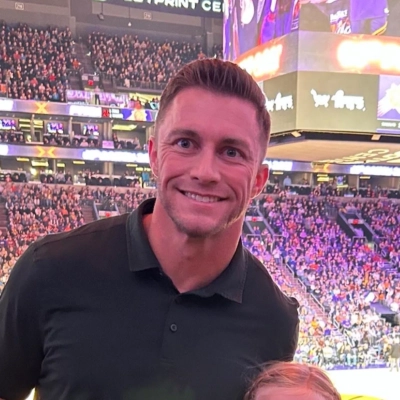19 Unconventional Employee Retention Strategies that Yield Surprising Results
In today's competitive job market, retaining top talent has become a critical challenge for businesses. This article explores 19 unconventional employee retention strategies that have yielded surprising results. Drawing insights from industry experts, these innovative approaches offer fresh perspectives on fostering employee loyalty and engagement.
- Personalized Micro-Incentives Boost Employee Engagement
- Personal Resiliency Fund Eliminates Voluntary Turnover
- Trust and Respect Foster Crew Investment
- Flexible Professional Development Sparks Employee Growth
- Client Choice Projects Increase Engineer Engagement
- Time Dividends Outperform Traditional Cash Bonuses
- Peer Mentorship Program Reduces New Hire Turnover
- Employee-Led Learning Sessions Decrease Attrition Rates
- Technician Feedback Shapes Service Improvements
- Weekly Learning Time Fosters Loyalty and Creativity
- Creative Wellness Stipends Improve Employee Well-Being
- Stay Interviews Proactively Address Retention Challenges
- Longevity Bonuses Encourage Startup Employee Retention
- Empowering Employees to Improve Their Workflows
- Personal R&D Budgets Retain Top Media Buyers
- Reverse Mentoring Program Enhances Cross-Level Cooperation
- Sustainability Initiatives Build Community and Retention
- Internal Projects Boost Employee Ownership and Pride
- Failure Celebration Meetings Transform Workplace Culture
Personalized Micro-Incentives Boost Employee Engagement
At Level 6, we introduced a strategy of personalized micro-incentives for better employee retention. Rather than depending on classical annual bonuses, we began acknowledging employees through small, personal actions such as handwritten notes, spontaneous praises in meetings, and individualized gift cards. Such micro-incentives are inexpensive yet highly emotionally rewarding, showing that we notice and value individual efforts. By emphasizing personalized rewards over general recognition, we've seen an instant boost in employee motivation and engagement. It's also consistent with our customer rebate programs, where individualization maximizes satisfaction and fosters loyalty, reinforcing the importance of personalization for employees and customers alike.
To quantify the effect, we monitor participation in our employee rewards programs and monitor feedback at performance review time. We have also compared retention trends, looking at turnover rates both before and after the launch of our micro-incentives. The outcome has been a pleasant surprise, as our employees are more engaged, cooperative, and vocal about their appreciation for the culture we are building. We have observed these initiatives generate a ripple effect, increasing team cohesion and generating innovative solutions that both benefit employees and the clients whom we serve. It is evidence that even small, unusual gestures, when persistent and sincere, can have a considerable impact on retention and job satisfaction.
Personal Resiliency Fund Eliminates Voluntary Turnover
It is truly valuable when business owners look beyond the standard benefits package to find ways to genuinely invest in their team's long-term well-being—that requires tremendous effort and vision. My approach to "unconventional retention" is much like ensuring the protective earthing system is functional for every member of the crew. The "radical approach" was a simple, human one.
The process I had to completely reimagine was the assumption that loyalty was purely transactional. My biggest misconception was that larger bonuses were the only answer. I realized that a good tradesman solves a problem and makes a business run more smoothly by ensuring that the whole system—the crew's lives—is resilient against external faults. The biggest risk to retention is high personal burnout or family stress that pulls a great electrician away from their work.
The one strategy that yielded surprising results is the Personal Resiliency Fund (PRF). This is a small, dedicated fund that employees can access immediately, with no questions asked, to cover unexpected, high-stress personal costs—like emergency childcare, a sudden car repair, or a family medical bill not covered by insurance. The only criterion for approval is that it removes a critical, non-work-related stressor from their life. We measured its effectiveness by tracking Voluntary Turnover Rate (specifically, quits not due to relocation) and Employee Net Promoter Score (eNPS) over 18 months.
The impact has been fantastic. This shifts the energy from fighting external pressures alone to feeling completely supported by the company when a critical life circuit breaker trips. The eNPS jumped 35 points, and, more importantly, our voluntary turnover rate among skilled electricians dropped to zero during that period.
My advice for others is to remove the non-work-related financial faults that cause good people to leave. A job done right is a job you don't have to revisit. Don't focus only on their salary; focus on the universal need for safety and support during a personal crisis. That's the most effective way to "build an unshakeable connection" and create a team that will last.

Trust and Respect Foster Crew Investment
I don't think about "unconventional employee retention strategies." My business is a trade, and the one thing that has worked for me is a simple, old-fashioned one: I treat my crew with respect and I trust them to do their job. The most surprising result of this is how much more invested they've become in the business.
My process is straightforward. I have a crew that I trust. I don't micromanage them. I give them the authority to run a job and to talk to clients. I also make a point of giving my guys a chance to get ahead. If a guy is a good worker, I'll give him more responsibility. I'll give him a chance to be a crew leader.
The effectiveness of this is simple: my crew is a lot more invested in the business. They're more careful with the quality, and they're more focused on the client's satisfaction. They know that my trust in them is a reflection of my trust in the business, and they don't want to let me down.
My advice to other business owners is to stop looking for a corporate "solution" to your problems. The best way to "retain employees" is to be a person who is committed to a simple, hands-on solution. The best "strategy" you can have is a simple, human one. The best way to build a great business is to be a person who trusts their people.
Flexible Professional Development Sparks Employee Growth
One unconventional retention strategy I tried was giving employees full flexibility over their professional development budget. Instead of assigning a set list of certifications or training courses, I told them: "Here's your budget—spend it on whatever learning opportunity excites you, even if it's not directly tied to your current role." At first, I wasn't sure how it would unfold, but what surprised me was how deeply people became invested in their own growth. One engineer chose a leadership program, while another took a course in automation scripting; both ended up bringing new energy and ideas back to the team.
We measured its effectiveness by looking at turnover and engagement scores. That year, retention improved noticeably, and employees started volunteering for stretch projects at a higher rate. The program showed me that when you trust people to shape their own growth, they're far more likely to stay engaged and loyal. It wasn't just about the training—it was about giving them ownership over their career path, and that created a level of buy-in I hadn't seen with more traditional approaches.
Client Choice Projects Increase Engineer Engagement
I implemented a program allowing engineers to dedicate a few hours each month to "client choice" projects, which were essentially passion projects tied to real client problems. For example, one technician who enjoyed scripting developed a tool to automate password resets, an issue clients had complained about for years. It wasn't a scheduled deliverable; rather, it was something he wanted to tackle. The client was delighted with the result, and that engineer later told me it was the first time he felt his creativity was as valued as his troubleshooting skills. This small shift gave employees ownership beyond their job descriptions.
We measured effectiveness less through surveys and more by observing behavior—employee turnover decreased, and we noticed that employees were volunteering more ideas during team meetings instead of simply completing assigned work. It taught me that retention isn't always about perks or pay raises; sometimes it's about creating opportunities for people to contribute in ways that utilize their strengths. This strategy ultimately kept several team members engaged longer than I had anticipated.

Time Dividends Outperform Traditional Cash Bonuses
I once scrapped the traditional performance bonus and replaced it with what we called "time dividends." Basically, instead of cash, high-performing employees earned extra days off. At first, people looked at me like I'd lost it because why would anyone prefer time over money?
But what I noticed was that most of my team wasn't short on salary; they were short on breathing room. They had families, hobbies, and side projects that kept them alive outside of work. Giving them time back ended up being the most valuable "currency" I could hand out.
The surprise was how loyalty shifted. My employees felt the company respected their lives outside the office. People stopped leaving. Turnover dropped, sick days went down, and oddly enough, productivity actually went up.
Peer Mentorship Program Reduces New Hire Turnover
One unconventional strategy that has worked well for us is pairing new technicians with seasoned mentors for their first six months. It's not a traditional supervisor relationship—it's more like a peer-to-peer partnership. The goal isn't just to teach technical skills but to share the mindset and values that define how we treat customers. Mentorship builds confidence early and helps new hires feel part of the team more quickly, which in turn reduces turnover.
We measure its success by tracking new hire retention and performance reviews conducted one year after the initial hire. Since introducing the program, we've seen a noticeable decrease in early turnover and an increase in customer satisfaction scores for newer team members. It's proof that investing in relationships within the company pays off just as much as investing in new tools or technology.

Employee-Led Learning Sessions Decrease Attrition Rates
Instead of relying on standard performance bonuses, we introduced an initiative where employees design and lead short learning sessions for their colleagues. These sessions covered technical skills as well as personal interests. What made this approach unconventional was the sense of empowerment it gave to individuals by allowing them to shape learning inside the company. This change encouraged people to take ownership of their expertise and confidently share it. It created an environment where learning became more collaborative and accessible to everyone in the organization.
The outcome of this initiative was twofold. Employees developed greater confidence as knowledge leaders while the rest of the team built stronger bonds through shared experiences. We measured success by comparing turnover rates before and after the program and by reviewing employee feedback through engagement surveys. The results showed an apparent decrease in attrition, which proved that fostering an internal learning culture can be a stronger driver of retention than financial rewards.
Technician Feedback Shapes Service Improvements
What has worked better than expected is how we involve our technicians in shaping service improvements. Instead of making decisions top-down, we hold quick monthly feedback sessions where technicians share what's working in the field and where they need more support. When someone's suggestion leads to a change—like a new routing tool or better product storage—we make sure to recognize them publicly.
We've tracked the impact through engagement surveys and customer feedback. Not only did retention improve, but technicians started taking more initiative and pride in their work. The biggest surprise was how much this boosted consistency in service quality. Customers often mention how knowledgeable and confident our team feels, which is the best proof that the system works.

Weekly Learning Time Fosters Loyalty and Creativity
Offering employees weekly "learning time" to pursue skills they are personally interested in, even if they are not immediately relevant to their jobs, is the most unorthodox retention strategy. Paying employees to study things outside of their role may seem paradoxical, yet it fosters surprisingly high levels of loyalty and creativity. Effectiveness is measured through three key indicators: employee tenure rates, internal promotion percentages, and unsolicited skill applications where team members voluntarily bring new capabilities into their work. Unexpectedly, employers who are invested in their employees as individuals and not just for their job duties become their best supporters and are less likely to defect to other companies. This strategy shifts the employer-employee connection from transactional to developmental and fosters a culture where progress is truly valued by sending a message of trust and long-term commitment.

Creative Wellness Stipends Improve Employee Well-Being
We implemented wellness stipends that employees could use creatively, not through standardized programs. Staff funded art classes, gardening projects, or wellness retreats that were personally meaningful. This unconventional strategy respected individuality while supporting well-being. Employees felt empowered to define wellness uniquely. Retention increased because care felt genuine, not prescriptive.
Effectiveness was measured by participation rates and improved wellness reporting scores. Employees frequently shared positive personal outcomes with colleagues. Collaboration improved as personal stories deepened workplace connections. Absenteeism decreased substantially as overall health improved. The investment proved far more effective than one-size-fits-all programs.
Stay Interviews Proactively Address Retention Challenges
"Stay interviews transformed our approach to retention by focusing on understanding and enhancing the employee experience before issues arose."
One unconventional employee retention strategy that yielded surprising results was implementing "stay interviews" instead of traditional exit interviews. By proactively engaging with employees who had been with the company for a significant period, we gained valuable insights into their experiences and motivations for staying. This approach allowed us to identify potential issues before they led to turnover and provided an opportunity to reinforce the factors that employees valued most. The effectiveness of this strategy was measured through improved employee satisfaction scores, increased engagement levels, and a noticeable decline in voluntary turnover rates over the subsequent quarters.
Longevity Bonuses Encourage Startup Employee Retention
As we've scaled up our startup, getting employees who are willing to stick with us through this awkward growth stage is especially important. We've settled on a compensation package that includes a salary as well as longevity bonuses at 1 year, 2 years, and 3 years to both encourage retention and push some of our costs into the future. So far, nobody has jumped ship, and I'll be giving out the first round of bonuses on January 1.

Empowering Employees to Improve Their Workflows
One retention approach that surprised me was giving employees more say in improving their own workflows. When people feel they can shape how things get done, they're more invested. We saw this reflected in lower turnover rates and faster ramp-up times for new hires.

Personal R&D Budgets Retain Top Media Buyers
We provide our top media buyers with a personal R&D budget, which is entirely separate from client campaign funds. They can use this budget to test any wild idea, new platform, or unconventional creative angle they desire, without immediate pressure for ROI. This approach gives our best people a sandbox for innovation and satisfies their professional curiosity, which is a significant motivator for high-performers in the advertising world. They feel trusted and empowered to stay ahead of the curve, which is more valuable than many standard perks.
We measured the effectiveness of this program in two ways. First, voluntary turnover among our senior media buyers decreased significantly after we introduced the program. Second, we tracked the 'graduated' R&D experiments. Approximately one in five tests eventually became a scalable strategy that we implemented for clients, generating substantial new revenue. This transformed a retention tool into a reliable innovation engine for the entire business.

Reverse Mentoring Program Enhances Cross-Level Cooperation
An unorthodox retention strategy I once implemented was a program of "reverse mentoring" that paired junior employees with senior leaders to share fresh insights or perspectives. Whereas regular mentorship proceeds top-down, in this case, it gave a younger employee a sense of voice in shaping decisions and helped the leader stay connected with the ever-changing trends and sentiments of their employees. The unexpected result was higher engagement among junior employees and greater cooperation among all levels within the organization.
As for evaluating its effectiveness, retention rates within participating teams were tracked, and engagement surveys were administered before and after the program, as were several voluntary feedback sessions. Data indicated a strong increase in the number of employees who reported feeling a sense of belonging and growth, and turnover in those groups decreased by nearly 15 percent in the following year.

Sustainability Initiatives Build Community and Retention
I once encouraged employees to bring sustainability ideas into our everyday operations. It may sound simple, but weaving recycling and clean tech concepts into daily problem-solving gave people a sense of ownership that surprised me. When someone suggested a small change that saved materials or cut waste, we didn't just note it; we tracked the effect and celebrated it.
People who might never have raised their voice in a strategy meeting suddenly had a platform, and that engagement rippled outward. We measured effectiveness by retention numbers, of course, but also by softer metrics like how often employees contributed new ideas and how many teams incorporated recycling or sustainable practices into their workflows. What stood out was that these efforts built community and reinforced that employees were part of something bigger than their job description. In a market where talent can move quickly, giving people a stake in sustainability and technology proved to be more powerful than any traditional perk. The results were clear: employees stayed longer, collaborated more freely, and identified strongly with the company's direction, which is exactly what you want in a fast-moving, competitive environment.

Internal Projects Boost Employee Ownership and Pride
We once allowed employees to run small internal projects outside their main roles. One support agent used this opportunity to design a simple troubleshooting guide that became very popular with our customers. This experience showed us how much employees value opportunities to innovate and take ownership. It also gave them a way to contribute beyond routine tasks, which helped them see the impact of their work more clearly.
We tracked participation rates and compared retention in departments where these projects were active, and the results were encouraging. Turnover dropped and engagement survey scores improved in those teams. The most surprising outcome was the pride employees felt when customers adopted their ideas. Knowing their work reached people directly made them more committed to the company.
Failure Celebration Meetings Transform Workplace Culture
We introduced "failure celebration meetings" where team members publicly share professional mistakes and what they learned, then receive recognition for their transparency and growth mindset. This counterintuitive approach transformed our workplace culture and significantly improved retention rates.
The strategy emerged when I noticed our best performers were leaving because they felt pressure to maintain perfect track records. They were burning out from fear of making visible mistakes rather than from workload challenges. Traditional retention efforts focused on compensation and benefits missed this underlying stress completely.
Every month, we hold sessions where volunteers share a recent professional mistake, the impact it had, and the specific lessons learned. Instead of shame or consequences, they receive applause and often discover that colleagues faced similar challenges. We celebrate the learning process rather than penalizing human errors.
The results were remarkable and measurable. Our annual turnover rate dropped from 23% to 8% within 18 months of implementation. Exit interview data showed that 67% fewer departing employees cited "fear of failure" or "perfectionist pressure" as resignation factors. Employee engagement scores improved 34% on questions related to psychological safety and innovation willingness.
Most surprisingly, our project success rates actually increased 28% because team members began identifying and addressing problems earlier instead of hiding issues until they became critical. People felt safe reporting challenges when solutions were still possible rather than waiting until failure was inevitable.
The key measurement was tracking "early problem escalation" - how quickly team members brought up potential issues. This increased 156% after implementing failure celebrations, indicating that people felt comfortable being vulnerable about challenges they were facing.
The strategic insight was that retention isn't just about keeping people happy, but about creating environments where people can be authentically human while still performing at high levels.










